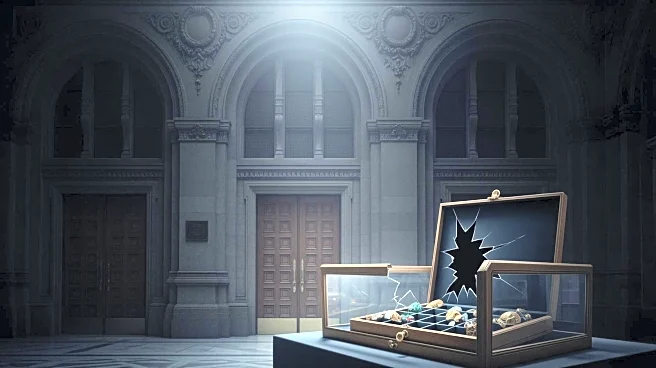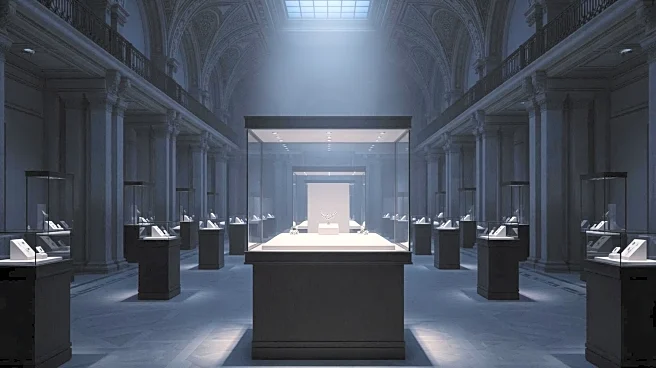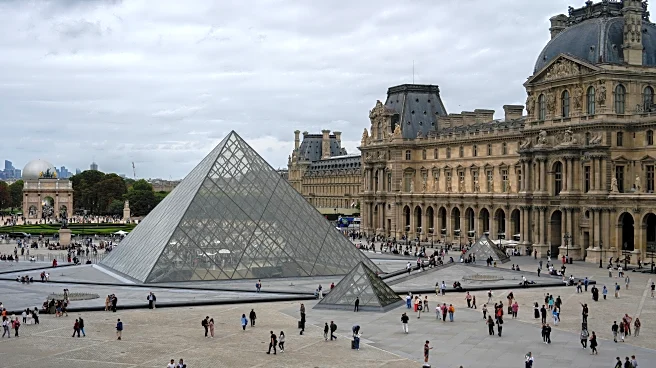What's Happening?
Following a significant jewelry heist at the Louvre Museum, experts express skepticism about the recovery of the stolen artifacts. The thieves used a truck-mounted ladder to access the Apollo Gallery,
targeting high-security display cases with tools like an angle grinder and blowtorch. The operation lasted just seven minutes, and eight of the nine stolen items remain missing. French Justice Minister Gerald Darmanin acknowledged security failings at the museum, and experts suggest the jewelry may be dismantled and sold, complicating recovery efforts.
Why It's Important?
The heist highlights critical security lapses at one of the world's most renowned museums, prompting concerns about the protection of cultural heritage. The potential loss of these artifacts, which include items from the Napoleonic era, represents a significant cultural and historical blow to France. The incident may lead to increased scrutiny of museum security practices globally, as institutions seek to prevent similar occurrences. The theft also underscores the challenges of recovering stolen art, particularly when items are dismantled and sold on the black market.
What's Next?
The Louvre Museum remains closed as investigations continue. Authorities face a limited window to recover the stolen items before they are potentially dismantled and sold. The incident may prompt a reevaluation of security measures at the Louvre and other cultural institutions, potentially leading to enhanced protocols and technological advancements. The international art community may also engage in discussions about collaborative efforts to protect cultural heritage and improve recovery efforts for stolen artifacts.
Beyond the Headlines
The heist raises ethical and legal questions about the protection of cultural heritage and the responsibilities of institutions to safeguard their collections. The incident may also prompt discussions about the role of organized crime in art theft and the challenges of recovering stolen artifacts in a globalized world. The theft's impact on France's cultural identity and the broader implications for international art communities highlight the need for increased collaboration and innovation in protecting cultural assets.












